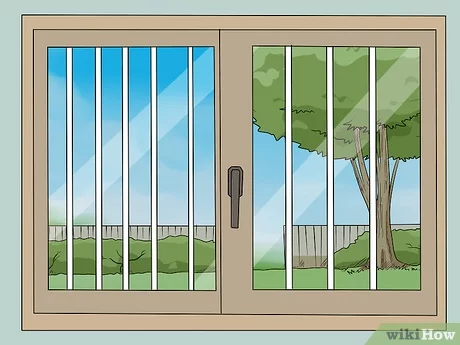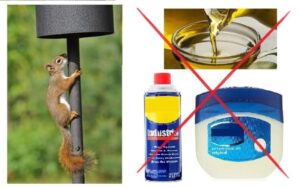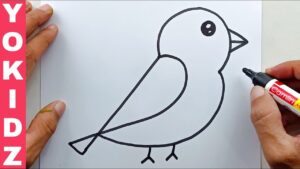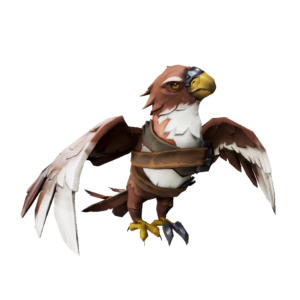Birds often fly into windows because they see reflections of the sky or trees. This can cause serious injury or death to the birds.
Preventing birds from flying into windows is crucial for their safety. Many homeowners face this issue, especially during migration seasons. Birds can’t distinguish glass from open air and often crash into it. Understanding why birds collide with windows can help us find effective solutions.
In this post, we will explore simple and practical ways to prevent these accidents. By making a few changes, you can protect birds and enjoy their beauty without harm. Stay tuned for tips and tricks that can make a big difference.
:strip_icc()/BHG-gardening-design-nature-lovers-prevent-birds-from-flying-into-windows_hero-1396ad83109946168900f691dd9c9b49.jpg)
Credit: www.bhg.com
Why Birds Collide With Windows
Birds often mistake reflections in windows for open sky or trees, leading to collisions. To prevent this, apply decals or screens on windows.
Birds often fly into windows, which can be startling and tragic. Understanding why this happens can help us prevent these accidents. Birds do not see glass the way humans do. To them, windows can appear invisible or reflect the environment.Common Causes
Birds collide with windows for several reasons. One common cause is reflection. Windows often reflect trees, sky, and other natural scenery. Birds think they can fly through these reflections. Another reason is transparency. Birds see plants or objects inside a building and try to reach them. They do not understand that the glass is a barrier. Birds also collide during migration. They fly long distances and sometimes mistake windows for open spaces. This is especially true at night when birds navigate by the stars. Bright lights from buildings can confuse them.Effects On Bird Population
Bird collisions with windows significantly impact bird populations. Millions of birds die each year from these accidents. This loss affects the ecosystem. Birds play crucial roles in pollination, pest control, and seed dispersal. Losing so many birds disrupts these natural processes. Some bird species are more vulnerable. Endangered and migratory birds suffer the most. Their populations are already low. Collisions with windows can push them closer to extinction. Protecting birds from window collisions helps preserve biodiversity. It ensures that future generations can enjoy these beautiful creatures. “`
Credit: www.wikihow.com
Understanding Bird Vision
Birds often collide with windows, causing injury or death. Understanding bird vision can help prevent these accidents. Birds see the world differently than humans. Their vision capabilities are unique and diverse.
How Birds See
Birds have excellent vision, often superior to humans. They can detect a wider range of colors. Birds see ultraviolet light, which humans cannot. This ability helps them find food and mates. Their eyes are also positioned on the sides of their heads. This gives them a wide field of view. It helps them spot predators from a distance.
Factors Affecting Bird Vision
Several factors influence how birds see their environment. Light conditions play a significant role. Birds see better in bright light. Reflective surfaces, like windows, confuse them. They mistake reflections for open space. Glass transparency also affects their vision. Birds cannot always perceive clear glass as a barrier. The angle of the window can mislead them. They may not realize they are flying towards a solid object.
Understanding these factors can help reduce bird-window collisions. Simple changes can make a big difference.
Effective Window Treatments
Birds flying into windows can be a big problem. It can hurt the birds and damage your windows. There are many ways to stop this from happening. One of the best methods is using effective window treatments. These treatments make the windows more visible to birds. Below are some of the most effective window treatments.
Decals And Stickers
Decals and stickers are a simple way to keep birds away from windows. They come in many shapes and sizes. You can choose from birds, leaves, and many other designs. Place them on the outside of your windows. Birds will see them and fly around them instead of into them. Here are some tips for using decals and stickers:
- Place them close together, about 2-4 inches apart.
- Cover the entire window area.
- Use bright colors for better visibility.
- Change the placement every few months.
Window Films
Window films are another great option. They cover the whole window and can be clear or patterned. Birds see the pattern and avoid the window. Window films also have other benefits. They can reduce glare and block UV rays. Here are some types of window films:
- Static Cling Films: Easy to apply and remove.
- Adhesive Films: More permanent, but harder to remove.
- Decorative Films: Come in many patterns and colors.
Applying window films is easy. Clean the window first. Measure and cut the film to fit. Remove the backing and stick the film to the window. Smooth out any bubbles with a squeegee.
Both decals and window films are effective ways to keep birds from flying into windows. They are easy to use and can make your windows look nice too. Choose the one that works best for you and enjoy a bird-safe home.
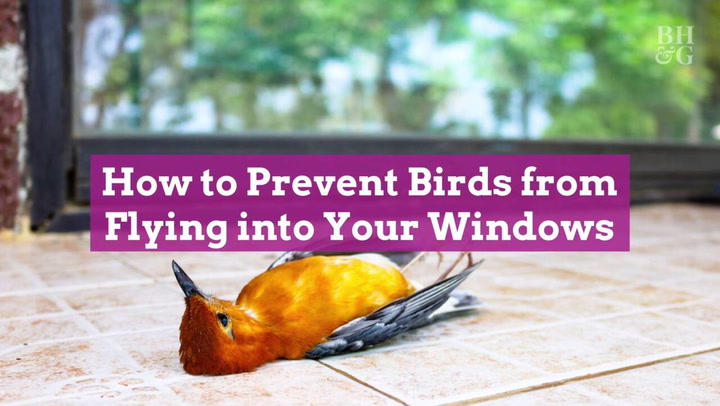
Credit: www.bhg.com
Outdoor Modifications
Birds often mistake reflective windows for open sky or habitat. This leads to collisions. Outdoor modifications can help prevent these accidents. Simple changes can make a big difference. Here are a few effective ways to keep birds safe.
Installing Screens
Screens are a practical solution. They reduce reflection and provide a visible barrier. Birds see the screens and avoid the windows. Install them on the outside of the window. This also provides extra protection against pests.
Screens are easy to install. You can find them at most hardware stores. Choose a fine mesh screen for the best results. This will also help keep insects out of your home. It’s a win-win situation.
Using External Shutters
External shutters offer another option. Close the shutters during peak bird activity. This reduces reflections and makes the window less visible.
Shutters also add an aesthetic touch to your home. They come in various styles and colors. Choose ones that match your house decor. They are easy to operate and can be opened when not needed.
Combining these methods can be very effective. Protect birds and enhance your home’s appearance with these outdoor modifications.
Indoor Solutions
Birds often fly into windows because they see reflections of trees or the sky. This can hurt or even kill the birds. There are several indoor solutions to prevent this from happening. Here are some effective methods that you can try at home.
Blinds And Curtains
Installing blinds or curtains is a simple and effective solution. You can close them partially or fully to break up reflections. This will make windows less transparent. Birds will not see the outside environment in the glass.
Choose light-colored curtains. They reflect more light and reduce glare. This makes it easier for birds to see the window as a solid object. Blinds can be adjusted to different angles. This helps to reduce the visibility of reflections.
Moving Indoor Plants
Another effective method is moving indoor plants away from windows. Birds might mistake the reflection of the plants for real greenery. By relocating plants, you reduce the chance of this happening. Place plants in corners or other areas that do not reflect in the windows.
Consider using hanging plants or wall-mounted planters. These options keep greenery indoors without increasing the risk to birds. Avoid placing plants directly in front of large windows.
Here is a quick guide to rearranging your indoor plants for bird safety:
| Action | Effect |
|---|---|
| Move plants away from windows | Reduces window reflections |
| Use hanging plants | Keeps greenery without reflections |
| Avoid window sills | Prevents birds from seeing reflections |
Seasonal Considerations
Seasonal considerations play a crucial role in preventing birds from flying into windows. During certain times of the year, bird activity can increase, making it essential to take specific measures. By understanding the different seasons and how they affect bird behavior, you can better protect these feathered friends.
Migration Periods
During migration periods, birds travel long distances between their breeding and wintering grounds. This movement peaks during spring and fall. Birds often become disoriented by reflections on windows during these times. To prevent collisions, use window decals or screens. These create visible barriers that birds can see and avoid.
Breeding Seasons
Birds become more territorial during breeding seasons. This period usually occurs in late spring and early summer. Birds may see their reflections as rivals and fly towards them aggressively. Reduce window reflections by closing blinds or curtains. You can also apply external films to windows. These steps can help keep birds safe during this critical time.
Long-term Strategies
Long-term strategies for preventing birds from flying into windows are crucial. These methods ensure a sustainable solution. They help protect birds and reduce harm to them. Let’s explore two effective strategies: building design changes and community efforts.
Building Design Changes
Thoughtful building design can significantly reduce bird-window collisions. Integrating bird-safe glass is one effective method. This glass has patterns visible to birds but not to humans. It helps birds recognize windows as solid objects.
Another design change is angling windows downward. This prevents reflections of the sky and trees. Birds are less likely to fly toward such windows. Placing screens on the outside of windows also helps. Screens reduce reflections and provide a cushion if birds do collide.
Community Efforts
Community efforts play a vital role in bird safety. Educating others about the issue is important. Share information on how to make windows bird-safe. Encourage the use of bird-friendly materials in new buildings.
Organizing community events can raise awareness. Bird-watching events and educational workshops are effective. These activities engage the community and spread knowledge.
Supporting bird conservation groups is another key step. These groups work to protect birds on a larger scale. They often have resources and expertise to help communities. Collaborating with them can amplify efforts and make a bigger impact.
Monitoring And Maintenance
Keeping birds from flying into windows involves consistent monitoring and maintenance. This ensures all preventive measures are effective. Regular checks help spot any issues early. Maintenance keeps the preventive tools in good condition. This section explains how to monitor and maintain bird deterrents properly.
Regular Inspections
Inspect windows regularly. Look for signs of bird collisions. Check for feathers, smudges, or other marks. These signs mean birds are still hitting the windows. Note which windows are most affected. Focus preventive measures on these areas.
Check the condition of deterrent tools. Make sure decals or stickers are not peeling off. Ensure window screens are intact. Confirm that UV-reflective patterns are visible. Replace or repair any damaged deterrents.
A simple table can help track inspections:
| Window | Inspection Date | Signs of Collision | Action Taken |
|---|---|---|---|
| Living Room | 10/01/2023 | Yes | Replaced decals |
| Kitchen | 10/01/2023 | No | None needed |
Updating Preventive Measures
Update preventive measures as needed. Birds can get used to certain deterrents. If collisions persist, try new methods. Rotate different types of decals or stickers. Change the arrangement of window patterns.
Consider seasonal changes. Birds migrate during certain times of the year. Increase preventive measures before migration seasons. Add extra decals or screens during these times.
List of possible updates:
- Change decal designs
- Add window screens
- Install external shutters
- Apply one-way transparent film
- Use UV-reflective paint
By keeping up with monitoring and maintenance, you can significantly reduce bird-window collisions. This helps protect birds and keeps your windows clean and safe.
Frequently Asked Questions
Why Do Birds Fly Into Windows?
Birds often mistake reflections for open space or see indoor plants. They can’t distinguish glass from open air.
What Can I Put On Windows To Prevent Bird Collisions?
You can use decals, stickers, or special bird-safe glass. These create visible patterns that birds can see.
How Do Window Decals Work?
Window decals create visual cues that birds notice. This helps them avoid flying into the glass.
Are Certain Windows More Dangerous For Birds?
Large, clear, and reflective windows are more dangerous. Birds can’t see these well and may fly into them.
Conclusion
Preventing birds from hitting windows protects them. Simple fixes can help. Place decals, curtains, or screens on windows. Move feeders and plants away from glass. Keep blinds closed. These steps make a big difference. Save our feathered friends. Start making changes today.

